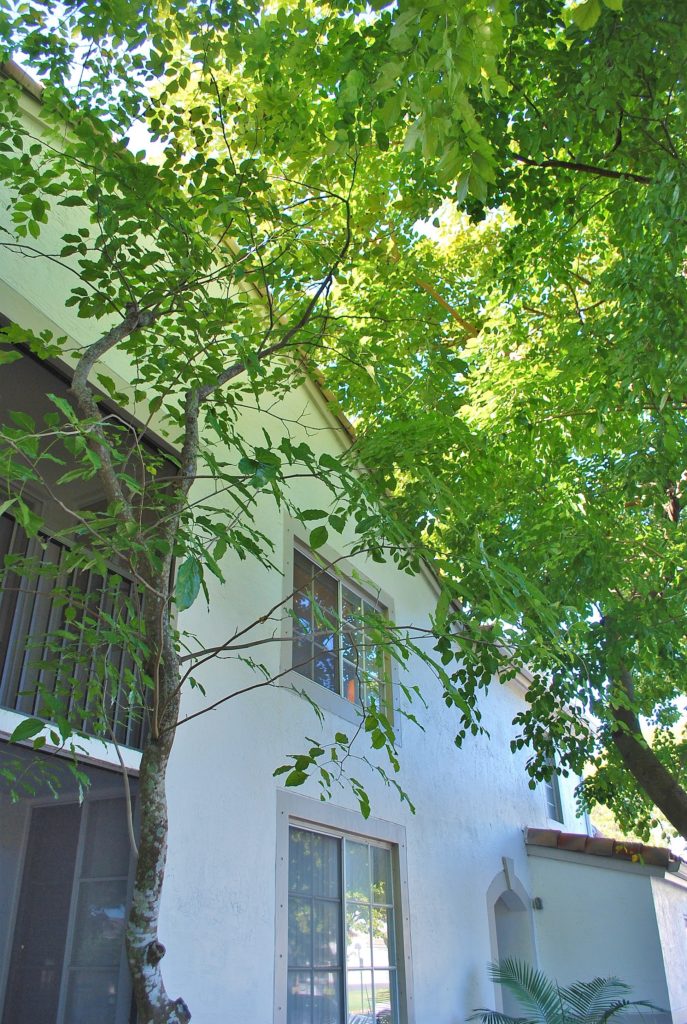Dear Carol, A Magnolia tree is planted about a foot off my driveway and about two feet off my house. The tree is just about two years old and as tall as my home and into my driveway. Is this tree going to get so big that it will break up my paver driveway and damage my home and its walls? Do tree shade and roots affect walls, roofs, and driveways?
Thank you,
Benny

Communities with trees are inviting. Recent studies into the importance of the environment found that the most essential factors in neighborhood satisfaction are trees, well-landscaped grounds, and places for taking walks. Consider these facts: landscaping can add between 7 and 15 percent to a home’s value. Plants improve air quality – one tree can remove 26 pounds of carbon dioxide from the atmosphere annually, and shade from properly placed landscaping can reduce air conditioning costs by up to 50 percent.
Through codes, ordinances, and rules, municipalities and owners’ associations have requirements for landscaping due in part to the facts stated above. However, what seems to be missing is the common sense needed to ensure the proper placement and installation of the required trees and landscaping.
To be fair, there is often considerable pressure on architects, landscape architects, builders, and inspectors to get it done, fast and cheap. The goals are to plan, build and approve structures quickly with maximum profit. Sure, we know trees should not be placed close to a wall or walkway, but if young trees are placed 15 to 20 feet from the structure at the usual installation size of 12 to 14 feet tall, trees can look lost or too small. When placed closer to the building, the landscape at least looks acceptable at purchase or turnover.
Yes, it is known by all involved, plants grow. But we as consumers have become impatient and want it all now. There are a few strategies to overcome overplanted landscapes and trees installed in the wrong place; move or remove the plants. Spend the money and time after the initial installation to re-plant the landscape. Use the services of a landscape architect, designer, or horticulturist to place the plants at the proper spacing and distances for growth to a mature size. This ensures tree shade and roots will not negatively affect walls, roofs, and driveways.
The minimum recommended distance for a tree from the wall is 15 feet and enough space for the roots to grow. I like to think about the ultimate size of the tree and use that as a guide for placement. Consider the mature canopy width of the tree and plant at least half that width from walls. As to roots and pavers, roots will likely undermine pavers with trees nearby in the landscape. Tree roots grow considerable distances, 1.5 to 5 times the width of the canopy.
However, it is a myth that tree roots damage foundations by growing under them. Tree roots need air and water, which are primarily absent under concrete foundations unless there is a problem such as a broken or leaking water line.
Yes, move the magnolia and give it plenty of room to grow strong roots and a mature canopy. Check out these resources for more information about selecting and placing trees.
- University of Florida – Urban/Suburban Design to Support Trees and Planting Trees in Landscapes
- The Arbor Day Foundation – Designing a Landscape with Trees
- University of Missouri – Tree Placement on Home Grounds
- International Society of Arboriculture – Planting a Tree
This article first appeared in the Treasure Coast Newspapers.
Leave a Reply